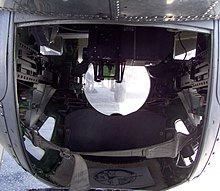Saturday, October 31, 2015
What are these rotating beacons.??
The first nighttime airmail flights started on July 1, 1924. By
eliminating the transfer of mail to rail cars at night, the coast to
coast delivery time for airmail was reduced by two business days.
Eventually, there were 284 beacons in service.[3]
With a June 1925 deadline, the 2,665 mile lighted airway was completed
from New York to San Francisco. In 1927, the lighted airway was complete
between New York and Salt Lake City, Los Angeles to Las Vegas, Los Angeles to San Francisco, New York to Atlanta, and Chicago to Dallas, 4121 miles in total. In 1933, the Transcontinental Airway System totaled 1500 beacons, and 18000 miles[4]

Friday, October 30, 2015
Thursday, October 22, 2015
Tuesday, October 20, 2015
Monday, October 19, 2015
Andrew's fancy little airplane
If you have seen my brick you will look to the right of mine to see the father of Andrew... Grady is one of our retired flight engineers.
Andrew is now a Test Pilot for Boeing Aircraft in Seattle.
Andrew is now a Test Pilot for Boeing Aircraft in Seattle.
Saturday, October 17, 2015
Friday, October 16, 2015
This explains how the Fan up front is well worth the MOD..
Pratt & Whitney’s new PurePower Geared Turbofan aircraft engines
are impressive beasts. Scheduled to enter commercial service before the
end of the year, they burn 16 percent less fuel than today’s best jet
engines, Pratt says. They pollute less. They have fewer parts, which
increases reliability. And they create up to 75 percent less noise on
the ground, enabling carriers to pay lower noise fees and travel over
some residential areas that are no-fly zones for regular planes. Airbus,
Bombardier, Embraer, Irkut, and Mitsubishi have certified the engines
for use on their narrowbody craft. JetBlue, Lufthansa, Air New Zealand,
Malaysia’s Flymojo, and Japan Airlines are among the engine’s 70 buyers
in more than 30 countries.
To people outside the aircraft business, what may be most remarkable about the engines is that they took almost 30 years to develop. That’s about 15 times as long as the gestation period of an elephant and unimaginably longer than it takes to pop out a smartphone app. Could Pratt have gotten the hardware out faster? Probably. But industrial innovation on the scale of a commercial jet engine is inevitably and invariably a slog—one part inspiration to 99 parts perspiration.
In Pratt’s case, it required the cooperation of hundreds of engineers across the company, a $10 billion investment commitment from management, and, above all, the buy-in of aircraft makers and airlines, which had to be convinced that the engine would be both safe and durable. “It’s the antithesis of a Silicon Valley innovation,” says Alan Epstein, a retired MIT professor who is the company’s vice president for technology and the environment. “The Silicon Valley guys seem to have the attention span of 3-year-olds.”
To people outside the aircraft business, what may be most remarkable about the engines is that they took almost 30 years to develop. That’s about 15 times as long as the gestation period of an elephant and unimaginably longer than it takes to pop out a smartphone app. Could Pratt have gotten the hardware out faster? Probably. But industrial innovation on the scale of a commercial jet engine is inevitably and invariably a slog—one part inspiration to 99 parts perspiration.
In Pratt’s case, it required the cooperation of hundreds of engineers across the company, a $10 billion investment commitment from management, and, above all, the buy-in of aircraft makers and airlines, which had to be convinced that the engine would be both safe and durable. “It’s the antithesis of a Silicon Valley innovation,” says Alan Epstein, a retired MIT professor who is the company’s vice president for technology and the environment. “The Silicon Valley guys seem to have the attention span of 3-year-olds.”
Thursday, October 15, 2015
Wednesday, October 14, 2015
Randy Foster's home in ww-2.
A ball turret was a spherical-shaped, altazimuth mount gun turret, fitted to some American-built aircraft during World War II. The name arose from the turret's spherical housing.
It was a manned turret, as distinct from remote-controlled turrets also in use. The turret held the gunner, two heavy machine guns, ammunition, and sights. The Sperry Corporation designed, ventral versions became the most common version, thus the term "ball turret" is most specific to these versions.
Contents
Sperry ball turret
Interior of the Sperry ball turret of a preserved B-17 (2008)
The Sperry ball turret was very small in order to reduce drag, and was typically operated by the shortest man of the crew. To enter the turret, the turret was moved until the guns were pointed straight down. The gunner placed his feet in the heel rests and then crouched down into a fetal position. He would then put on a safety strap, close and lock the turret door. There was no room inside for a parachute, which was left in the cabin above the turret. A few gunners wore a chest parachute.
The gunner crouched in a fetal position within the turret with his back and head against the rear wall, his hips at the bottom, and his legs held in mid-air by two footrests on the front wall. This left him positioned with his eyes roughly level with the pair of light-barrel Browning AN/M2 .50 caliber machine guns which extended through the entire turret, and located to either side of the gunner. The cocking handles were located too close to the gunner to be operated easily, so a cable was attached to the handle through pulleys to a handle near the front of the turret. Another important factor relative to the guns was the fact that not all stoppages could be corrected by simply charging (cocking) the guns. In many cases, when a gun failed to fire, it was necessary for the gunner to "reload" the gun, which required access to the firing chamber of the guns. Access to the firing chamber of the guns was severely restricted by the guns location in the small turret. Normally, the gunner accessed the firing chamber by releasing a latch and raising the cover to a position perpendicular to the gun but this was not possible in the ball turret. To remedy that, the front end of the cover was "slotted". The gunner released the latch and removed the cover which allowed a few inches over the firing chamber for the gunner to access and clear a stoppage. Small ammunition boxes rested on the top of the turret and the remaining ammunition belts fed the turret by means of an elaborate chute system. A reflector sight was hung from the top of the turret, positioned roughly between the gunner's feet.
The directional control was by two hand control grips with firing buttons incorporated. The left foot controlled the reflector sight range reticule. The right foot operated a push-to-talk intercom switch. The turret was normally electrically powered in azimuth and altitude. An emergency hand crank could be attached to reposition the turret from inside the aircraft fuselage. In the event of a power failure another crewman would use this to crank the turret into the vertical position to allow the gunner to exit.[1]
A B-24J's Sperry ventral ball turret in its retracted position for landing, as seen from inside the bomber.
In the case of the B-24, the Liberator's tricycle landing gear design mandated that its A-13 model Sperry ball turret have a fully retractable mount, so that the ball turret would always be retracted upwards into the lower fuselage while the aircraft was on the ground, providing ground clearance with it in the stowed position.
ERCO ball turret
An Erco ball turret
Erco Ball turret, on display at National Museum of Naval Aviation, FL.
Capt Herb checks over a B-17 many years after.
| Herb flew the B-17 in ww-2 | During his flying career he flew 50,000 hours. |
| Add caption |
Monday, October 12, 2015
The book signing was a big success.
Edwin Eugene "Buzz" Aldrin Jr. (born January 20, 1930) is an American engineer and former astronaut, and the second person to walk on the Moon. He was the Lunar Module Pilot on Apollo 11, the first manned lunar landing in history. He set foot on the Moon at 03:15:16 on July 21, 1969 (UTC), following mission commander Neil Armstrong. He is also a former U.S. Air Force officer and a Command Pilot.
Friday, October 9, 2015
Subscribe to:
Comments (Atom)



































